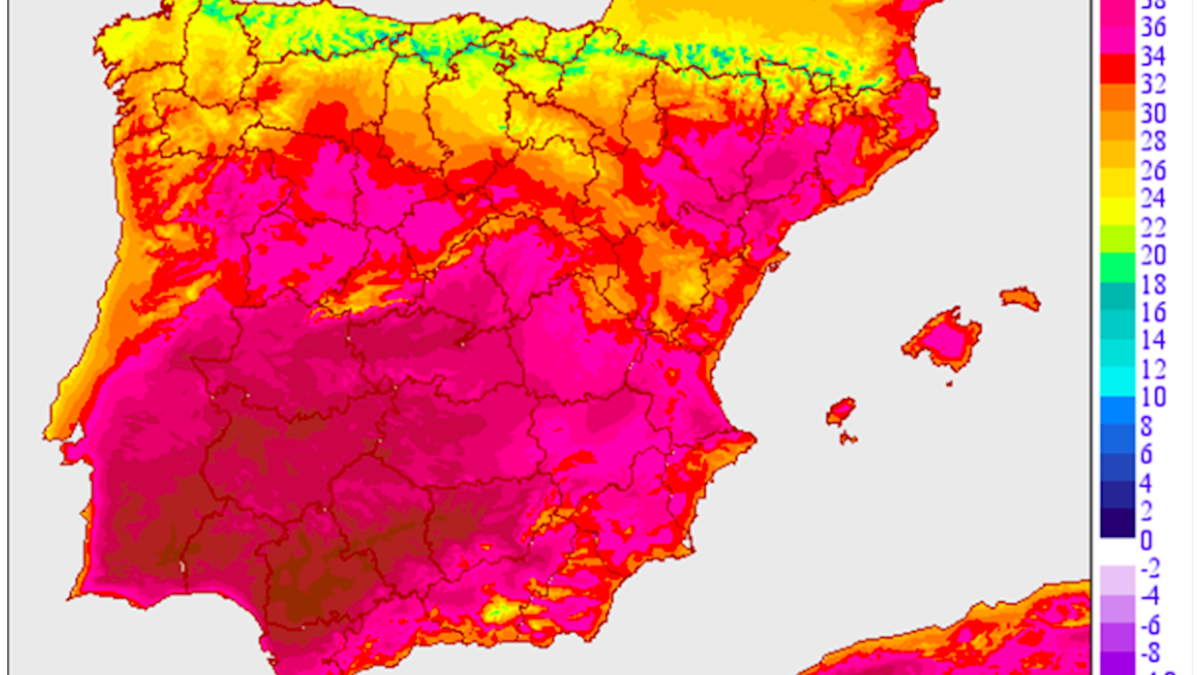Record-setting heat waves are baking the Arctic region

By Ian Livingston
13 August 2024
(The Washington Post) – Parts of the Arctic are enduring exceptionally high temperatures — up 30 to 40 degrees above normal — because of multiple intense heat domes.
One intense heat dome has progressed from northern Alaska to Canada’s Hudson Bay over the past week, delivering round after round of historically high temperatures. A smaller but equally persistent heat dome has been toasting parts of Scandinavia’s Arctic on the opposite side of the North Pole.
The exceptional warmth — intensified by human-caused climate change — is affecting a region that has warmed three times as much as the global average. And it’s happening as the National Oceanic and Atmospheric Administration just announced July was the 14th successive month with record-high global temperatures.
Over the past week, temperatures soared to nearly 100 degrees Fahrenheit in Norman Wells, Canada, just 90 miles south of the Arctic Circle. Locations in Alaska set numerous record highs; the mercury climbed as high as 90 degrees in Eagle, 193 miles east of Fairbanks. Off the coast of Greenland, Longyearbyen, Norway, the northernmost city on Earth with a sizable population witnessed its warmest August day, with a high of nearly 70.
As these high-latitude locations have heated up, some of the cool air normally found there has been displaced into the mid-latitudes — offering temporary relief from scorching summer heat in parts of the central and eastern United States.
Heat in Canada’s north and Alaska
Underneath the heat dome in northern Canada, drought has intensified, and fires are ravaging many areas.
Canadian weather historian Thierry Goose has been compiling a growing number of temperature records. Some of the more notable records are listed below:
Records were also set in portions of Alaska because of the same heat dome before it shifted east. Deadhorse, along the southern coast of the Arctic Ocean, set an all-time high of 89 on Aug. 6 and was warmer than most places on the Florida Peninsula.

Heat and rapid ice melt near Norway
On the opposite side of the hemisphere, historic heat was observed north of the Arctic Circle in Scandinavia in recent days.
Longyearbyen in Norway’s Svalbard Islands — between the Greenland and Barents seas — reached its highest August temperature on record the 11th, with a high of 68 degrees (20.2 C), or about 4 degrees (2.2 C) above the previous monthly record, according to meteorologist Daan van den Broek. On the 12th it topped what had been the record before 2024 yet again. Such back-to-back highs are without modern precedent.
On Monday, the European Union’s Copernicus Climate Service shared imagery of freshwater flowing, and kicking up sediment, into the ocean in the Svalbard Islands.
“In early August, snow and ice melting on the surface of the Svalbard ice caps reached the highest levels ever recorded, while temperatures remained up to 5°C above average for this area of the Arctic Circle,” the group wrote.
Arctic heat to persist
The heat this month comes on the heels of one of the hottest Julys on record for much of Canada, according to data presented by meteorologist Patrick Duplessis. Cities that posted July record highs include Edmonton and Calgary. Some places in far-northern Canada now witnessing record heat, however, were colder than normal in July.
At the same time, Arctic sea ice levels are nearing their annual minimum and are the fourth lowest on record to date. The usual low point for the season arrives by mid- or late September.
Temperatures are forecast to run 10 to 20 degrees (5.5 to 11.1 C) or more above normal across Arctic and sub-Arctic Canada through at least the next week to 10 days.
Record-setting heat waves are baking the Arctic region

